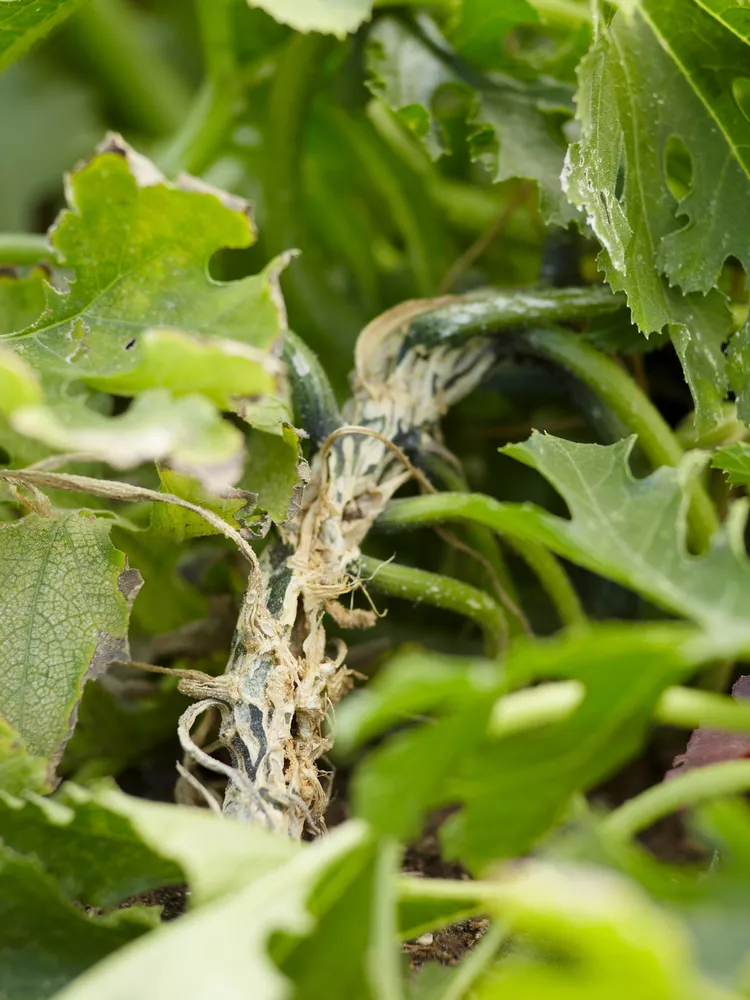Stop Squash Vine Borers in Your Garden

Some of the nastiest insect pests are the ones you don't see. And that's the case of squash vine borer, a common marauder that also attacks gourds and pumpkins. It's a worm that pierces the plant's stem, and then eats a tunnel through it. As the borer munches its way inside the stem, the plant wilts. There are ways to identify their presence and treat infested vines, so you can save your hard-earned produce.
Learn everything you need to know about summer squash here.
Identifying Squash Vine Borers
Squash vine borers leave a telltale sign: frass, which looks like sawdust, accumulates outside their entry hole. Watch for multiple entry holes; a large squash can host up to 100 borers.
The worms, which are white with a black head and grow about an inch long, are the larval form. Adult borers are gray moths with furry red legs and clear rear wings. They look a bit like a wasp.
The best practices for garden pest control.
Controlling Squash Vine Borers
Clean up: If borers infest your plants, pull out the vines and throw them in the trash before the end of the season. This prevents the worms from crawling out of the stems in July and August and overwintering in the soil.
Work the soil: Till the soil in spring or fall to disturb any cocoons from worms that make it into the ground.
Use a trap crop: Plant an extra 'Hubbard' squash; it's one of the borer's favorites and will usually be one of the first varieties they'll infest. Once you see it under attack, remove the entire vine and throw it in the garbage.
Practice crop rotation: Move your squash to a different section of your garden every year. That way, if the cocoons do overwinter, the moths will have a hard time finding your vines to lay their eggs.
Barriers: Prevent squash vine borers from boring by wrapping squash stems in a barrier, such as nylon cloth or burlap.
Kill the worms: If you notice the infestation early, carefully use a sharp knife to make a vertical cut along the stem where you see the borer hole. Remove the borer and cover that section of stem with soil or compost.